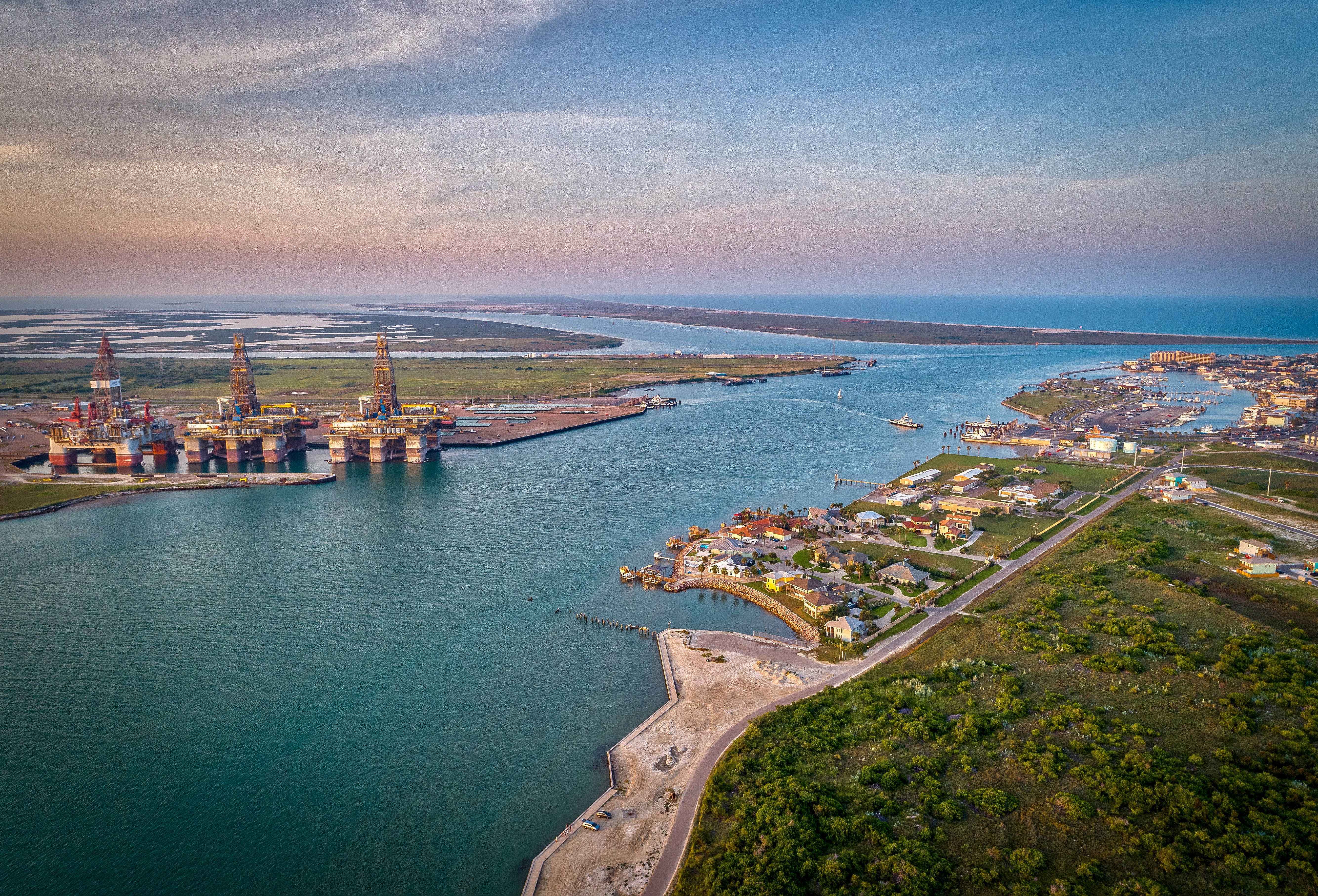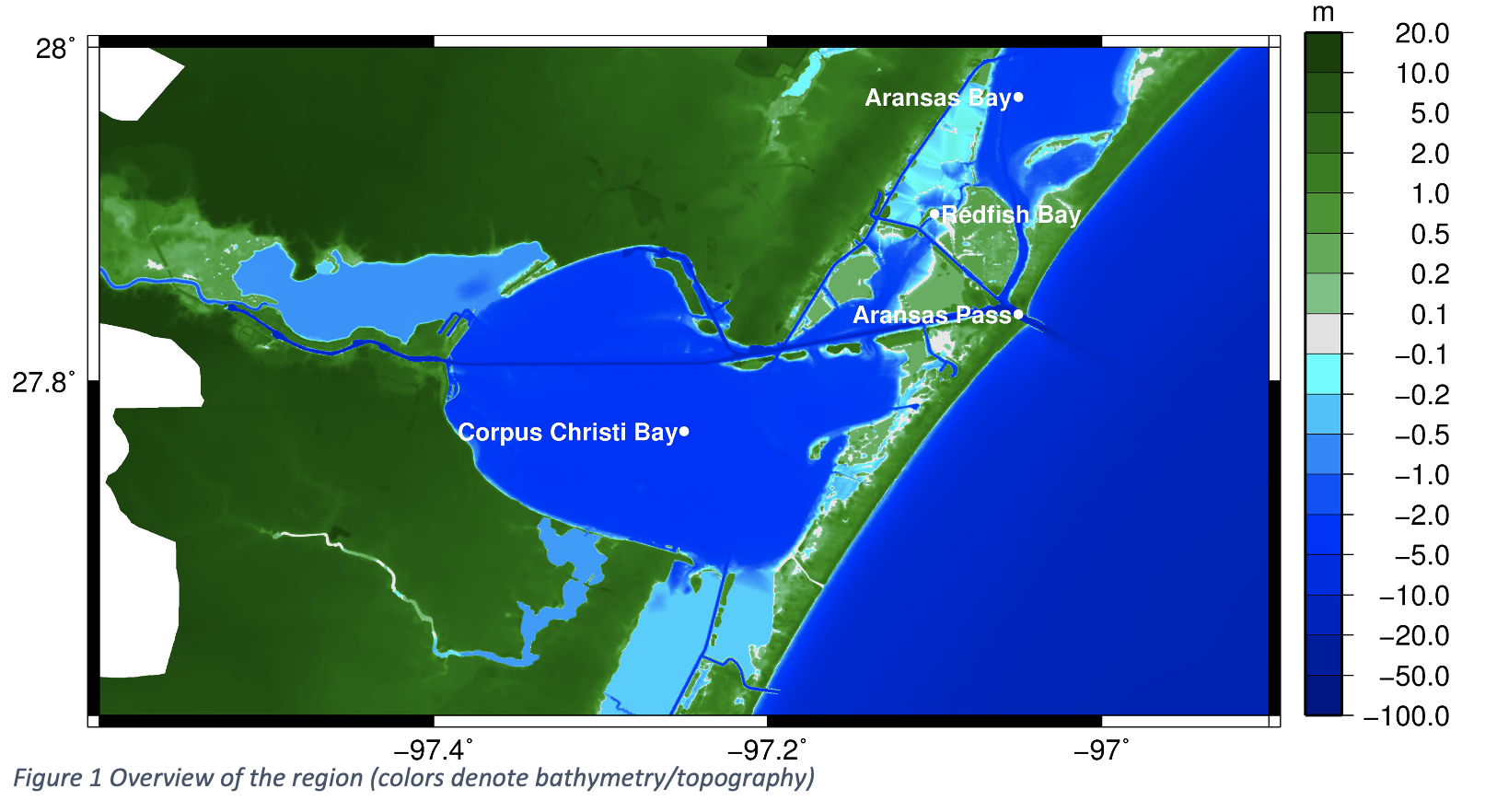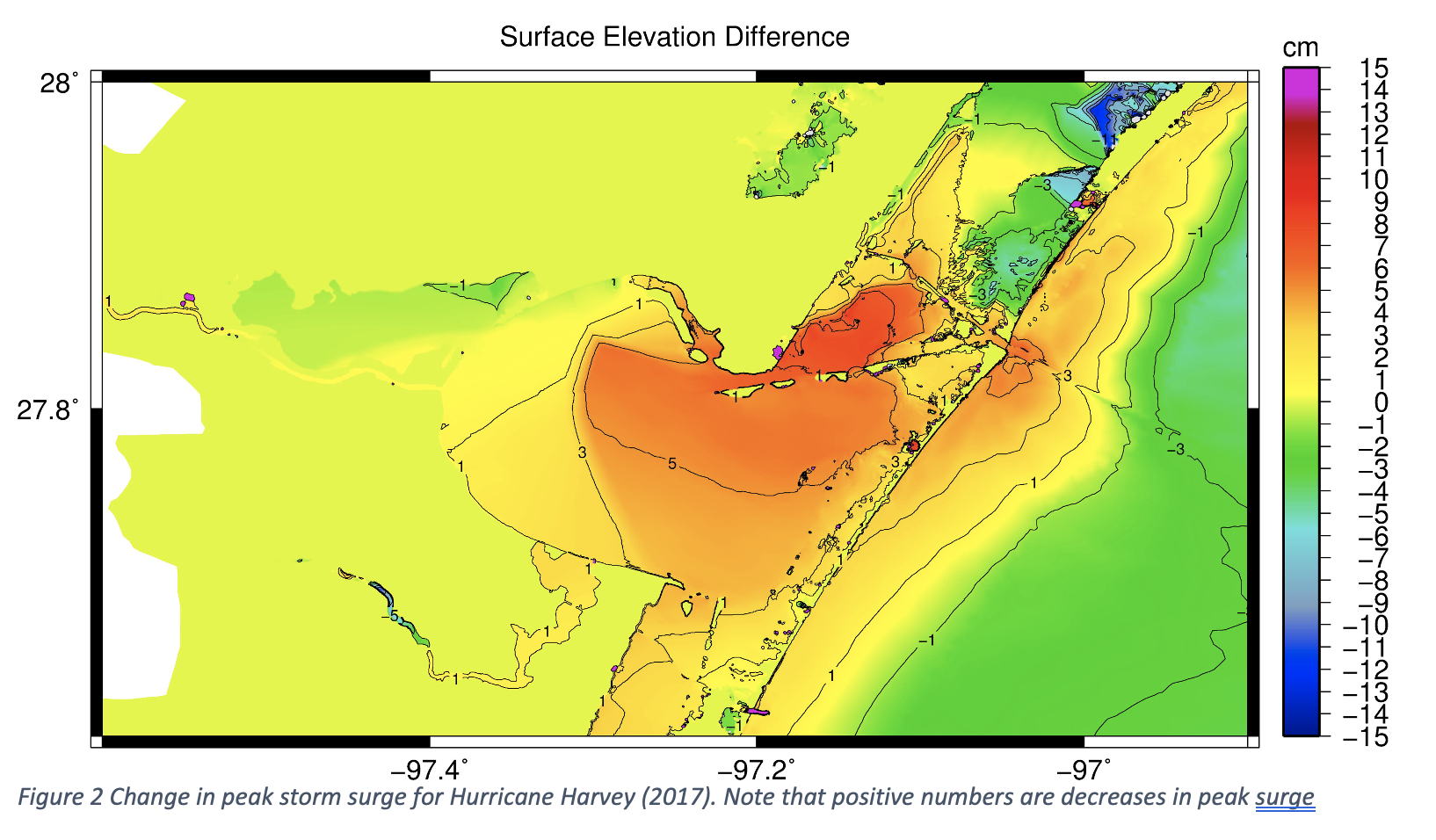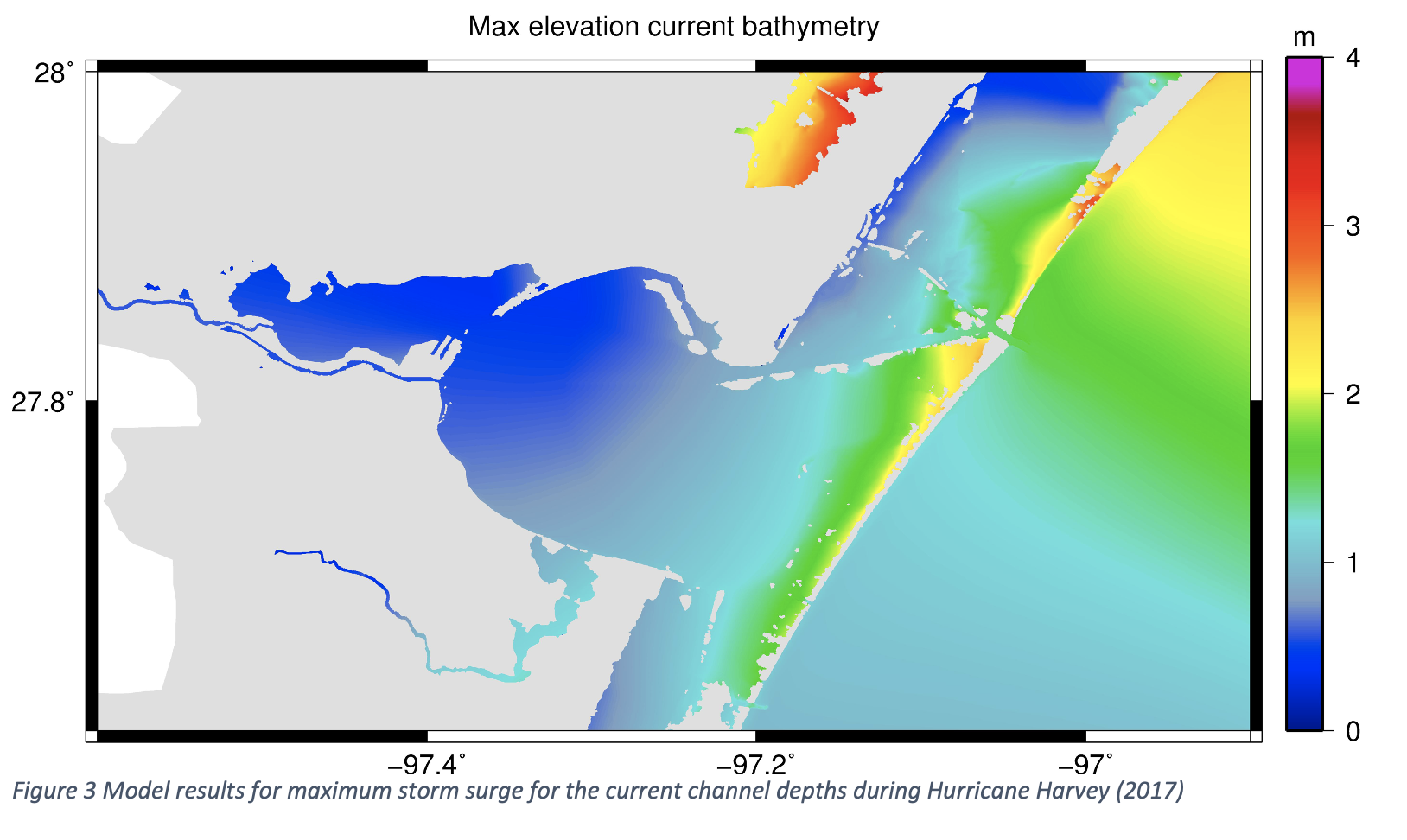A new case study using computational modeling has predicted minimal effects on increasing hurricane storm surge in surrounding Texas Gulf Coast communities as a byproduct of proposed depth increase of the Corpus Christi Ship Channel near Aransas Pass.
The study, published in the Journal of Computational Science, focused on the portion of the ship channel near Aransas Pass, a primary access point for commercial vessels to enter and exit the system of bays between the Gulf of Mexico and the Port of Corpus Christi. This natural tidal inlet divides Mustang Island and San José Island, and are protective barrier islands to mainland Gulf Coast communities. Researchers at the Oden Institute for Computational Engineering and Science at The University of Texas at Austin utilized computing resources at the Texas Advanced Computer Center (TACC) for their findings.
The Port of Corpus Christi located south of Houston is the nation’s largest U.S. energy export gateway and third largest seaport in total waterway tonnage in the country, according to their website. As part of a larger project to accommodate industry growth, it has been proposed to deepen the ship channel through Aransas Pass near Harbor Island to 70 ft. (21.33 m), from its current average depth of 47 ft. (14.33 m), which would allow for very large crude carriers (VLCCs) to access the port more easily. However, there is community concern that a deeper channel could affect the seawater flow through the channel and the bays behind it, which has environmental, recreational, and commercial interests for the surrounding communities.
Research associate Eirik Valseth, and Clint Dawson, Director of the Computational Hydraulics Group (CHG) at the Oden Institute, and Department Chair of Aerospace Engineering and Engineering Mechanics at the Cockrell School, collaborated with Edward Buskey, Director of The University of Texas Marine Science Institute in Port Aransas, Texas to predict what effect deepening the channel could have on area storm surge during a hurricane. Valseth emphasized that this research is independent of the current ship channel expansion project.




